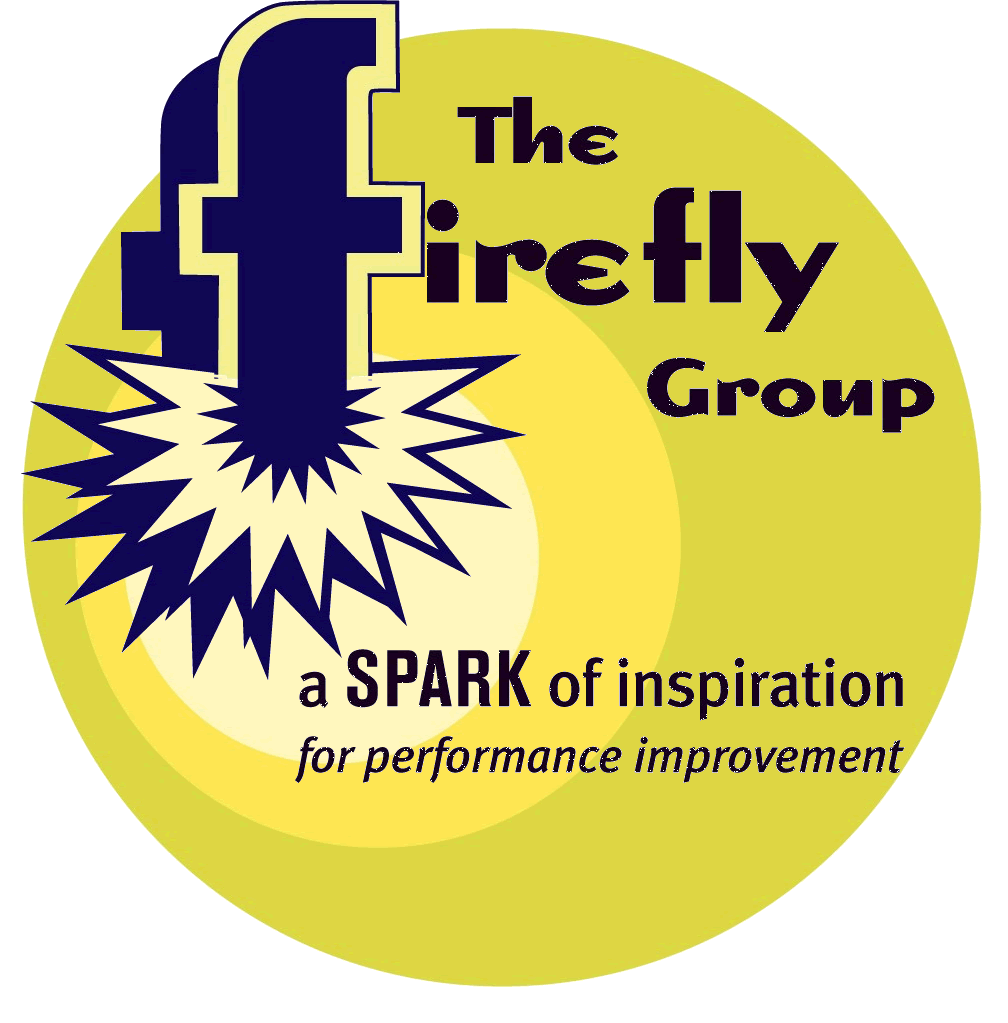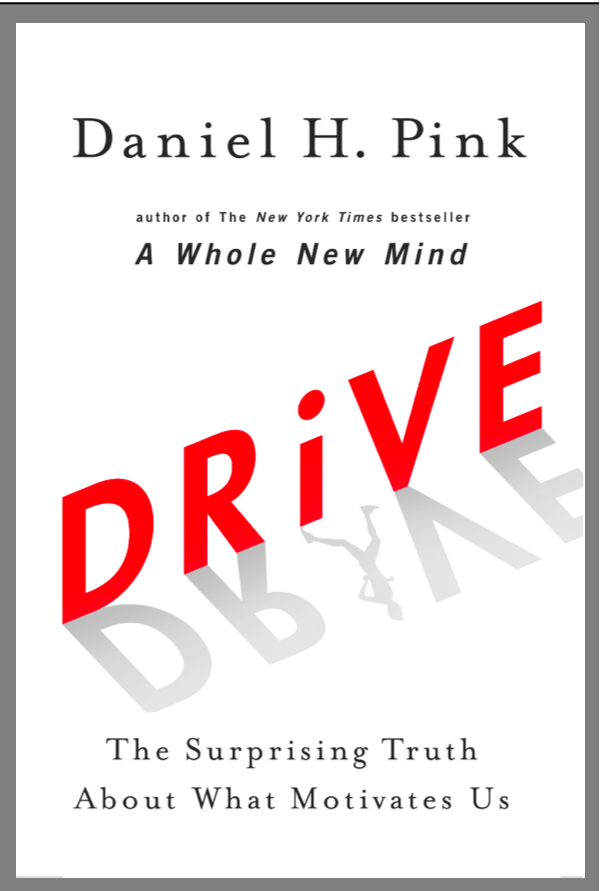


March 2010
In this Issue:
|
Say
It Quick |
Discoveries bits of serendipity to inspire and motivate |
Ideas fuel for your own continuous learning |
Activities tips and tricks you can try today |
| Motivation That's Habit Forming | Drive by Dan Pink | Autonomy, Mastery, Purpose | Have to, Get to, Want to |
Why do people do what they do? That's the question this month which we begin to explore with this story in exactly 99 words.
Motivation
That's Habit Forming
Everyone knows it's tough to quit smoking, but why do people start? Cigarettes
have a warning label. In Europe it covers half the pack! What's the motivation
to begin an activity that everyone knows will eventually kill them? No one
would drink a household cleaner - even though the warning label is less prominent!
Despite the obvious dangers, many people begin smoking to be cool, to be in, to be part of the group. Social belonging is one of the strongest human needs - and it crosses cultures.
Tap into belonging and you can motivate for life!
 Drive
by Dan Pink
Drive
by Dan Pink
Why would she do that?
Whether sitting in your living room, the boardroom, or the doctor's waiting
room, you've probably posed that question about someone's behavior. Now, in
Dan Pink's latest book you'll find a simple answer: autonomy, mastery, or
purpose.
Drive: The Surprising Truth About What Motivates Us tackles the question of motivation head on. We've all been taught that people do things for a reward or to avoid a punishment. Carrots and sticks have led us through our school years, guided us as parents, and propelled us through the world of work to our retirement. Except carrots and sticks don't explain everything. The promise of a shortened life is a pretty big stick on a pack of cigarettes but it doesn't prevent everyone from smoking!
In the book, Pink points out that external rewards and punishments imposed by someone else are less effective than internal, self-imposed motivators specifically our need for autonomy, mastery, and purpose. Drive is an exploration of what our lives and workplaces could be like if we structured them to meet these internal needs.
Such a vision includes:
Pink does an excellent job of synthesizing the work of many researchers and grounding the science in concrete examples. He acknowledges the difficulty of shifting from our old ways of motivating people and offers a very practical decision tree to help us know when external rewards might actually be unhelpful. A big plus of the book is the final section which outlines several dozen activities readers can use to learn more about internal motivators and practice using them to improve their organization and awaken their own motivation.
You can learn
more at www.danpink.com - if you are
so motivated!
(Drive: The Surprising Truth About What Motivates Us, by Daniel Pink,
Riverhead Books, New York, 2009, ISBN 978-1-59448-884-9)
Autonomy,
Mastery, Purpose
Can three words explain human behavior? This has been my experimental question
since reading Dan Pink's book as well as the work of several others on motivation.
At the risk of over simplifying the actions of people, I have been wondering
how broadly Pink's ideas about intrinsic motivation can be applied. With just
three succinct concepts, it's easy to see connections to complex behaviors.
Taking this month's 99-Word story as an example, Pink would likely explain that for some people, smoking was an expression of autonomy. The decision to start smoking may have been a young person's best attempt to exert their own will. But what is the motivation to continue? It must be purpose, or, as I've stretched it a bit, belonging. People need to feel like they are a part of something bigger than themselves, whether that's a cause, a mission, or a social group they admire.
New Year's resolutions provide another example. Why is it so difficult to stick with that new exercise program or diet? Because progress is slow, change is not readily measured, and we quickly begin to feel incompetent. We get discouraged because we cannot seem to master the task. After all, how hard can it be to run a mile or lose a couple pounds? But if we don't see results soon, we might conclude we'll never be up for the task.
Autonomy, mastery, and purpose can also provide the key to an un-motivating situation. Having trouble starting a project? Ask yourself what's missing. Is the project something you've been told to do or that you are not being allowed to do creatively? Try to build in more autonomy. Maybe it's dull, routine, or below your skill level. Look for ways to inject novelty or an opportunity to learn something new. Perhaps you aren't sure how the project will eventually be used or how it fits with other projects. Try to connect with the organization's mission or the Big Picture.
Once you start looking through the three lenses of autonomy, mastery, and purpose, you'll begin to see how their relevance is often a hidden influencer of much of our behavior. And when you find a great example, with us rather than letting it "go up in smoke!"
 Have
to, Get to, Want to:
Have
to, Get to, Want to:
What Motivational Operating System Are You Using?
by Fran Kick
This month's guest contributor, Fran Kick, works on issues of empowerment with youth and youth-serving professionals. But his ideas are just as relevant no matter what your age or profession. Here he shares his ideas about motivation along with a simple personal activity to see the importance of internal motivation in your own life.
In his book Drive: The Surprising Truth About What Motivates Us, Dan Pink does a masterful job of illustrating the "motivational operating system" of human society since the beginning of our time here on Earth. That's not an overstatement striving to impress you. No hyperbole or some professional-speaker stretching the story to make a point. Dan Pink's book, as reviewed by the International Herald Tribune, The Miami Herald and U.S. News & World Report, is a "thought-provoking," "audacious and powerful" book that's "right on the money." And certainly one you'll want to read ASAP! Here's why.
Dan Pink advocates a science-based, research-infused case for rethinking the best way to motivate ourselves as well as others. When it comes to motivation, he exposes a gap between what science knows and what business does. Plus, he offers a series of vivid perspectives and valuable tools on how you can upgrade your current "motivational operating system." Here's one way to look at what he shares:
|
Level
of Thinking and Feeling
|
Operating
System
|
First
Came into Development
|
Major
Operating Assumption
|
 |
Motivation 3.0 | 1970s thanks to the work of Ryan & Deci's Self-Determination Theory. | Motivated by autonomy, mastery, and purpose |
 |
Motivation 2.0 | As humans formed more complex societies | Motivated to seek rewards and avoid punishments |
 |
Motivation 1.0 | 50,000 years ago when humans first lived on Earth. | Motivated to survive, Purely a biological drive. |
In the words of Dan Pink: "These motivational operating systems, or sets of assumptions and protocols about how the world works and how humans behave, run beneath our laws, economic arrangements, and business practices. Motivation 1.0 presumed that humans were biological creatures, struggling for survival. Motivation 2.0 presumed that humans also responded to rewards and punishments in their environment. Motivation 3.0, the upgrade we now need, presumes that humans also have a third drive-to learn, to create, and to better the world."
So here's an easy self-reflection exercise for you to try. Consider each of the different levels of thinking or feeling about the various things you do. List the things you "Have to do" or "Get to do" or "Want to do." Consider how the higher you move up a motivational operating system version, the more self-motivated and committed you are to doing the things you listed.
|
Level
of Thinking and Feeling
|
Things
Fran Kick Does
|
Things
Brian Remer Does
|
Things
YOU Do
|
 |
Dance just to dance, Hike just to hike, Read science fiction, Play the piano. | Work on an art project, swim laps because it's fun. | |
 |
Make customer's day, Go see a movie this weekend. | Write the Firefly News Flash. | |
 |
Pay taxes and bills, eat. | Shovel snow, iron shirts, repair the aging Subaru. |
For further reading and to explore how you can develop the kind of self-motivation needed to intrinsically inspire the drive to "want to" work hard, get better and have fun check out:
Csikszentmihalyi, M. (1990). Flow: The Psychology of Optimal Experience. New York: HarperPerennial. Dan Pink states that when we are motivated by an optimal balance of autonomy, mastery, and purpose, we are in a state of "flow."
Deci, E. L. (1995). Why We Do What We Do. New York: Grosset/Putnam. Deci's work provides the theoretical basis for the importance of intrinsic motivation. It contains scientific data written in an engaging style.
Kick, F. (2006). Developing the Self-Motivation to KICK IT IN… when you're tired of the carrot-and-stick approach! http://www.kickitin.com/article2.html. Read this short article for examples of how intrinsic motivation can be applied to young people, then apply the lessons in all the other areas of your life.
Kohn, A. (1993). Punished by Rewards: The Trouble with Gold Stars, Incentive Plans, A's, Praise, and Other Bribes. New York: Houghton Mifflin. Alfie Kohn, a student of B.F. Skinner, came to realize that the father of operant conditioning actually knew very little about human motivation.
FRAN KICK has been inspiring people to KICK IT IN® and TAKE THE LEAD since 1986. With a B.A. in Education, a M.A. in Educational Psychology, and three children of his own, Fran knows What Makes Kids KICK!
© 2006 Fran Kick. Used with permission. www.kickitin.com
Read previous
issues. Click Archives!
To add or delete your name to our mailing list, email
with a short note in the subject line.
We want this newsletter to be practical, succinct, and thoughtful. If you have suggestions about how we can meet these criteria, please let us know! Send us an with your thoughts and ideas.
Home
| Services
| Products
| Mission
| Ideas |
The Group
| The Buzz
(c)
2005 The Firefly Group